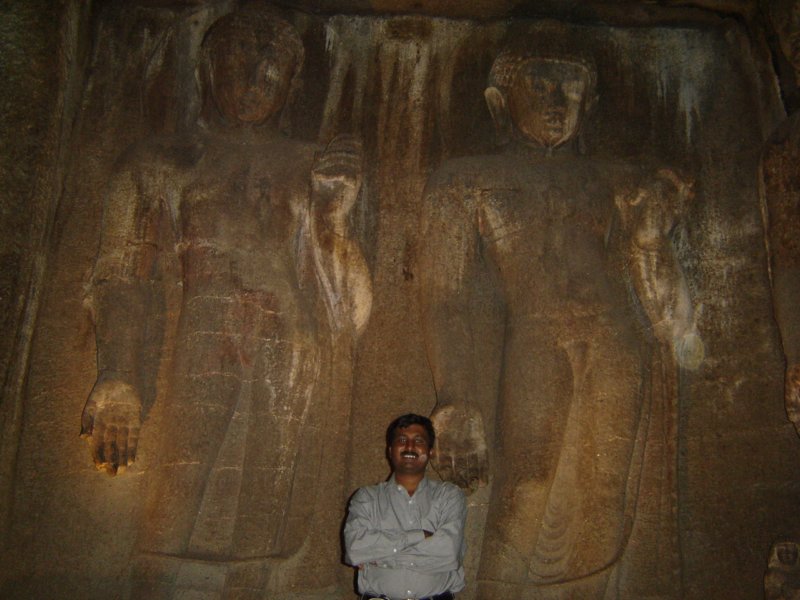

It is first approached by the visitor on site, and has no relation to the chronological sequence of the caves. It is the first cave on the eastern end of the horse-shoe shaped scarp. According to Spink, it is one of the latest caves to have begun on site and brought to near-completion in the Vākāţaka phase. Although there is no epigraphic evidence, it has been proposed that the Vākāţaka king Harisena may have been the benefactor of this better-preserved cave. A dominant reason for this is that King Harisena was not involved initially in patronizing Ajanta, but could not have remained aloof for long, as the site was burgeoning with activity under his rule, and the Buddhist laity would have loved to see the Hindu king participating in the pious act of patronage. Besides, most of the themes depicted are royal.
This cave has one of the most elaborate carvings on the facade with relief sculptures on entablature and fridges. There are scenes carved from the life of the Buddha as well as a number of decorative motifs. There was once a two pillared portico visible in the 19th century photographs, which has since been perished. The cave has a front-court with cells fronted by pillared-vestibules on either side. These have high plinth level. The cave has a porch with simple cells on either end. The absence of pillared vestibules on ends suggest that the porch was not excavated in the latest phase of Ajanta when pillared vestibules had became a necessity and norm. Most areas of the porch was once covered with murals of which notably high degree of fragments remain. There are three doorways: a central doorway and two side-doorways. Between the main and the side-doorways, two square windows have been carved that lit the interiors.
Each wall of the hall inside is nearly 40 feet long and 20 feet high. Twelve pillars make a square colonnade inside supporting the ceiling, and creating spacious aisles along the walls. There is a shrine carved on the rear wall, which houses an impressive seated image of the Buddha, his hands being in the dharmachakrapravartana mudra. There are four cells each on the left, rear, and the right wall. The walls are covered with paintings suggesting a fair state of preservation from decay. The scenes depicted are mostly didactic, devotional, and ornamental. The themes are from the Jataka stories (the stories of the Buddha's former existences as Boddhisattva), life of the Gautam Buddha, and those of his veneration.
Created with Web Album Generator